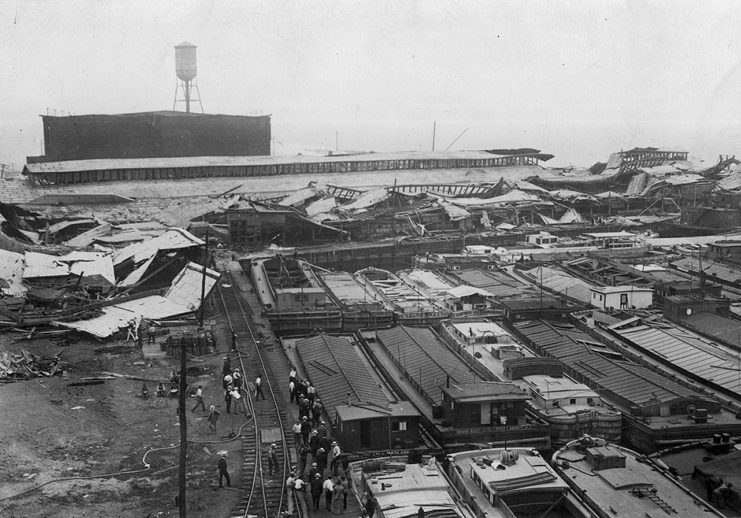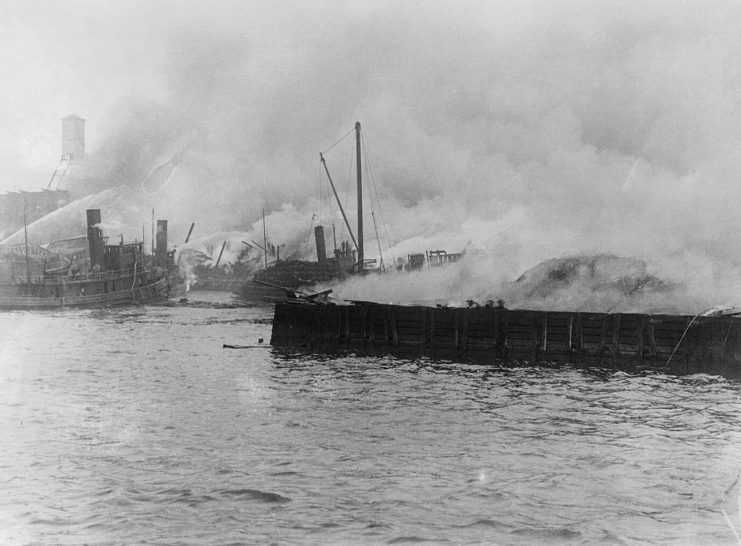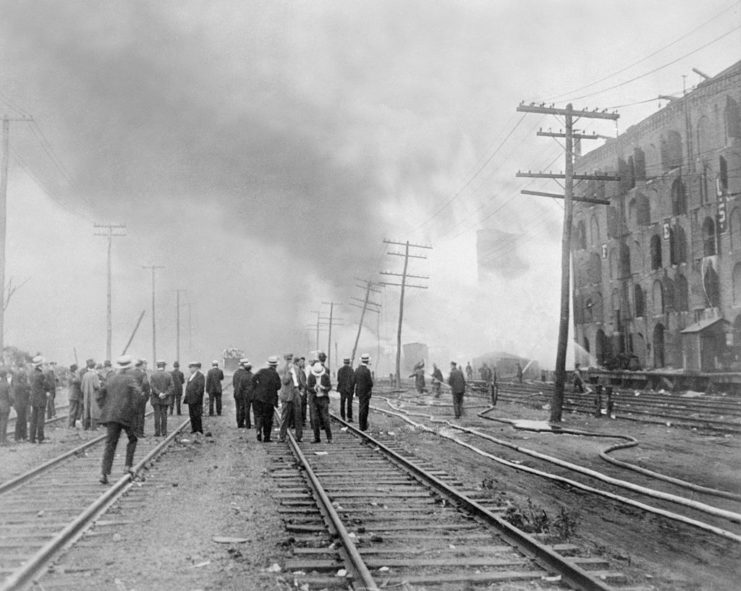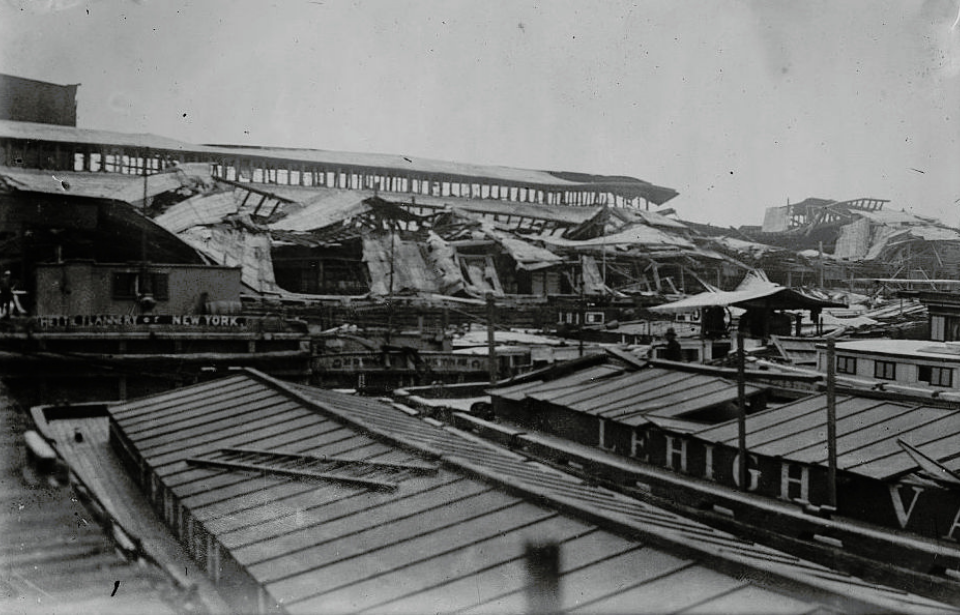On the morning of July 30, 1916, Manhattan was lit up by a huge flash, before being slammed by an enormous blast wave. Three men and a baby were killed; thousands of windows in lower Manhattan and Jersey City were blown out; and the Statue of Liberty was peppered with debris.
The source of the explosion? A storage depot on Black Tom Island, which held two million tons of equipment and supplies headed for Europe. The cause? German sabotage. At the time, the United States had little in the way of intelligence services, as the FBI‘s predecessor – the BOI – only had around 260 employees. As such, they struggled to get to the bottom of the explosion.
The Allies were being supplied by the United States
By this point, the Great War had been raging for two years, yet America was still a neutral country. Despite being neutral, it continued to be a key supplier for the armies fighting in Europe, with millions of tons of equipment, machines and supplies being shipped across the Atlantic Ocean.

Throughout the war, Germany attacked cargo vessels in the Atlantic to prevent supplies reaching Britain. These attacks proved devastating, and there was little the Allies could do to defend themselves against the threat. Germany was careful to not attack vessels from countries who were not yet involved in the conflict, as they didn’t want to provoke them into siding with the Allies.
The explosion on Black Tom Island was part of this plan to inhibit the Allies’ supply chain.
Black Tom explosion
On July 30, 1916, the supply depot on Black Tom Island contained around 1,000 tons of weapons and ordnance in train cars and on barges, ready to be shipped to Russia. One barge contained 50 tons of TNT, and was only moored at Black Tom Island to avoid a $25.00 charge.
That night, guards spotted small fires on the pier and alerted the Jersey City Fire Department. At 2:08 AM, an enormous explosion rocked the area as the TNT-laden barge blew up. The explosion measured between 5.0 and 5.5 on the Richter scale, smashed windows 25 miles away, and was heard as far away as Philadelphia.

Debris from the explosion hit the Statue of Liberty and the clock tower of The Jersey Journal building, more than a mile away. The fragments stopped the clock at 2:12 AM. The blast caused widespread destruction on Black Tom Island, with over one hundred railcars and 13 warehouses destroyed. Four died – it’s surprising, though, that a blast of such magnitude didn’t kill more.
Overall, the explosion caused around $20 million (almost $500 million today) worth of damage to properties in the area.
The US response
Due to the limited capability and experience of the nation’s intelligence service, the US had trouble finding the culprits. As well, a lack of laws forbidding espionage or sabotage during peace time only made things more difficult. While the Secret Service investigated the matter, it was actually the New York Police Department’s bomb squad that made the most progress.

The explosion was a major factor in the American public’s increasingly negative opinion of Germany. It, submarine warfare in the Atlantic and Germany’s proposal that Mexico join the war all led to the country’s entrance into the conflict.
